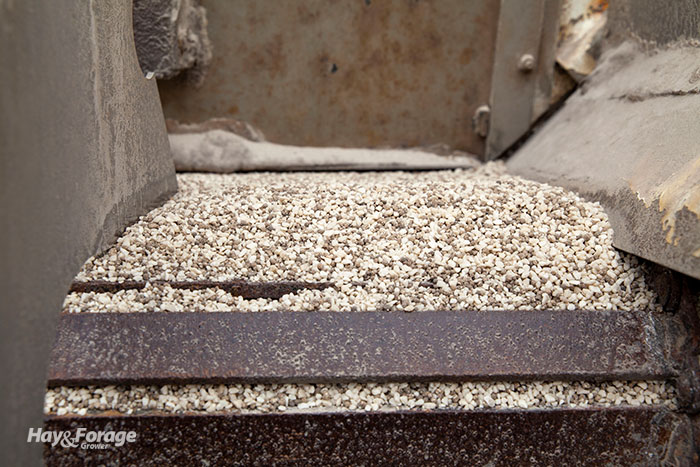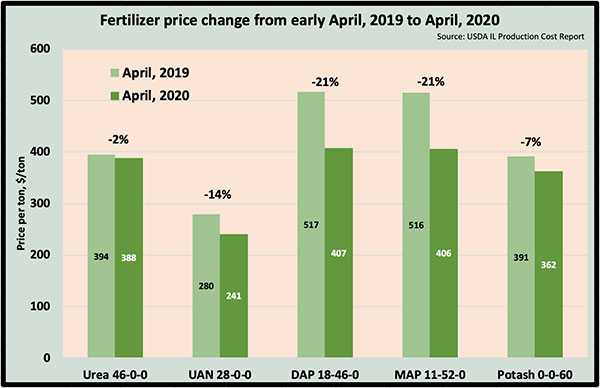
During these days when bad news seems to strike like a tsunami — day after day, wave after wave — there is a bit of positive economic news for crop producers. It comes in the form of lower fertilizer prices, and in some cases, much lower.
“Current (fertilizer) prices reflect the lowest fertilizer expense observed in more than a decade,” says David Widmer, an agricultural economist with Agricultural Economic Insights LLC. This comes despite the fact that USDA estimates farmers will plant the second largest corn crop on record.

The largest fertilizer price drops have been seen with phosphorus. Both diammonium phosphate (DAP; 18-46-0) and monoammonium phosphate (MAP; 11-52-0) year-over-year prices have dropped 21%, based on USDA’s Illinois Production Cost Report. At nearly $400 per ton, DAP and MAP prices are at their lowest levels since 2010.
Urea (46-0-0) has dropped the least with a decline of only 2% to $388 per ton; however, as recently as one month ago, the average Illinois urea price stood at $360 per ton. The current price of urea equates to 42 cents per pound of actual nitrogen.
Liquid nitrogen (UAN; 28-0-0) is down in price about 14% from a year ago and sits at 43 cents per pound of actual nitrogen, which is similar to dry urea.
The price for potash (0-0-60) is currently at $362 per ton, 7% lower than one year ago but still above the historical low of $300 per ton seen in 2016.
Low energy prices should help keep fertilizer prices in line during the near term. The unknown is how transportation issues related to COVID-19 and the economy might impact local supplies.

